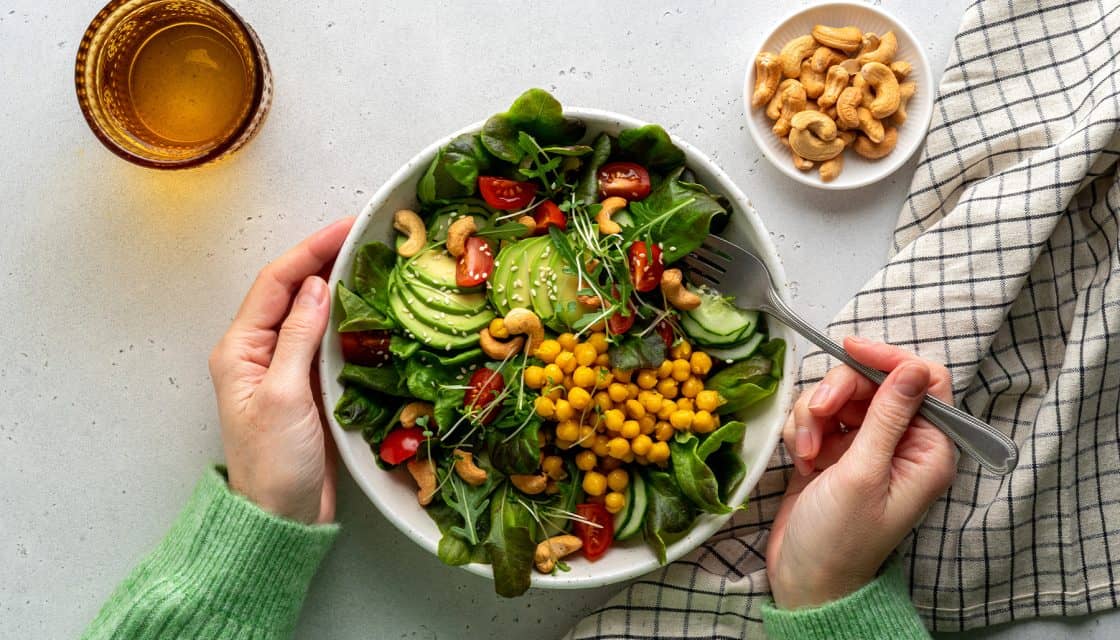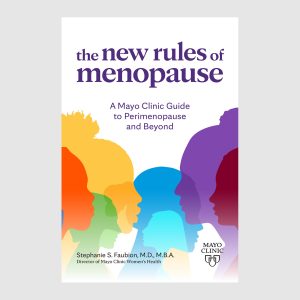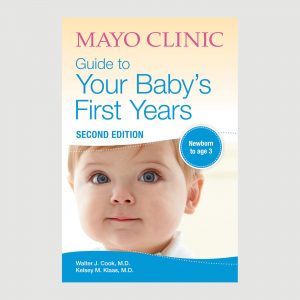
If ongoing digestive issues interfere with your quality of life, you’re not alone. Over 40% of people worldwide suffer from diarrhea, constipation, bloating and other gastrointestinal (GI) issues.
Symptoms can sometimes be embarrassing and painful. But have hope. Scientists are continually learning about the microorganisms that live in the gut and the profound influence they have on healthy digestion. Here’s what you need to know.
How gut microbiota influence health
The human body is home to trillions of microorganisms, including bacteria, fungi and viruses. They live in every part of the body from the surface of the skin to the lining of the intestines.
The largest population of microorganisms in the body lives in the gut — collectively called the gut microbiota.(5p2) Some of the ways that gut microbes support your health include:
- Protecting the GI tract from harmful bacteria and viruses.
- Digesting food and extracting nutrients.
- Producing vitamins the body can’t make on its own.
- Regulating the immune system and inflammatory response.
A healthy gut microbiota consists of a balance between the helpful microorganisms and the potentially harmful ones. Research is showing that a disrupted gut microbiota — when “bad” bacteria outnumber the “good” ones — is associated with IBS, inflammatory bowel disease (IBD), allergies, mental health issues like depression and anxiety, and other health conditions. At this point, however, it’s not clear if an altered gut microbiota is the root cause of the health condition or if the condition leads to alterations in the microbiota.
Support the microbes in your gut
A healthy GI tract and overall health go hand-in-hand. Emerging science indicates consuming prebiotics and probiotics may be two ways that diet can influence the balance of microbes in the gut.
Prebiotics
Prebiotics are typically high-fiber and resistant-starch foods that feed the microorganisms in your gut. Regularly eating these types of foods helps the beneficial microbes thrive. Neither resistant starches nor other types of fiber are digested by the body. Instead, they pass through your stomach and small intestine to your colon where they are fermented by gut microbiota.This process produces short-chain fatty acids, vitamins, nutrients and other byproducts that benefit the digestive system and entire body.
Not all fibrous or starchy foods are prebiotics, however. The official definition of a prebiotic is food that is fermented by bacteria in the gut “that results in specific changes in the composition and/or activity of the gastrointestinal microbiota, thus conferring benefit(s) on host health.”
In other words, to qualify as a prebiotic, a food must benefit the microbes that live in your gut that, in turn, benefit you. Examples include:
- Vegetables like garlic, leeks, asparagus, onions, dandelion greens and Jerusalem artichokes.
- Whole grains like oats.
- Fruits like bananas and apples.
- Cooked and then cooled potatoes and rice.
- Legumes like beans, lentils, peas and peanuts.
Probiotics
Probiotics are defined as “live microorganisms that, when administered in adequate amounts, confer a health benefit.” Probiotic foods or supplements support a healthy balance between the beneficial and potentially harmful microbes within the digestive tract.
Commonly consumed probiotics are mainly from two groups of bacteria: bifidobacteria and lactobacillus. Although other bacteria can also be used as probiotics and so can yeasts such as Saccharomyces boulardii.
Bifidobacteria and lactobacillus are often abbreviated as B. and L., respectively, on a food label, followed by the species of bacteria. For example, L. acidophilus on a yogurt label indicates the food contains the probiotic Lactobacillus acidophilus. (24p1)
- Yogurt and kefir are popular foods that often contain live probiotics.
- To potentially benefit you, the microbes in food must be alive.
- Different foods contain varying amounts of live microbes (kimchi, kombucha, cheese), and some foods lose microbes during processing (sourdough bread, canned sauerkraut, alcohol).
- A good rule of thumb is to look on the label for “live and active cultures.”
Consuming food with probiotics is safe for most people. Keep in mind that over-the-counter probiotic supplements are not usually regulated by the U.S. Food and Drug Administration. Plus, the impact that probiotics have on most health conditions isn’t known. If you’re considering a probiotic dietary supplement, consult your healthcare professional first. This is especially important if you have immune system issues and certain other health conditions.
Not all fermented foods are probiotics
Just because a food is fermented doesn’t mean it’s a source of probiotics. Fermentation increases shelf-life; improves taste, texture and digestibility; and it may enhance the nutritional profile of food. But bacteria are removed when fermented food is filtered (alcohol) and they’re killed when food is heat treated (canned sauerkraut, sourdough bread).
The care and feeding of the microbes in your gut
Your diet and lifestyle habits can greatly impact the microorganisms in the GI tract — for better or worse. Use these tips to help keep your gut microbiota healthy.
- Eat plenty of fruits, vegetables, whole grains and beans. These foods contain fiber, which serve as food for the good bacteria that live in your gut. Adding too much fiber too quickly can cause gas, abdominal bloating and cramping. Increase fiber gradually over a few weeks.
- Eat fermented foods with live cultures. Choose yogurt and other fermented foods that indicate on the label or packaging that they contain “live and active cultures.”
- Limit foods that negatively impact the gut microbiota. A diet that’s high in fast food, sugar, salt, processed foods and excessive alcohol can decrease gut microbiota diversity. A typical Western diet (low in fiber, high in animal protein and fat) is associated with a decreased variety of bacteria in the gut and a reduction in beneficial bacteria.
- Only take antibiotics when medically necessary and prescribed by your health care professional. Antibiotics are important because they fight infections caused by bacteria. But they can disrupt the healthy balance of gut microbiota, leading to issues like diarrhea, nausea and an overgrowth of Clostridioides difficile (C. difficile), a bacterium that causes an infection of the large intestine. A single dose of a broad-spectrum antibiotic can decrease the variety of gut bacteria for many weeks and might eliminate beneficial microbes. Eating a high-fiber diet alongside probiotic foods can help replenish the gut’s beneficial bacteria. However, medical diagnosis and treatment may be necessary for C. difficile infection.
- Exercise. Studies indicate that aerobic exercise positively impacts the gut microbiota by increasing the number of beneficial bacteria and overall variety of microbes in the GI tract.
- Manage your stress. Stress directly impacts the microbiota-gut-brain-axis, the bodily systems that allow two-way communication between the brain and the bacteria that naturally live in the gut. Gut bacteria regulate the production and function of neurotransmitters — like serotonin, dopamine and gamma-aminobutyric acid (GABA) — which play a vital role in mood, depression and anxiety.
- Get enough quality sleep. Disrupted sleep alters the makeup of the gut microbiome, leading to an unhealthy balance of microbes.
The trillions of microbes living in your gut are your partners in health and wellness. Eating a nutritious diet and practicing lifestyle habits that support a healthy balance of the microbes in your gut can help give you a strong foundation to live your best life.

Relevant reading
Period.
Backed by the experts at Mayo Clinic, PERIOD. is the no-nonsense guide kids and caregivers alike can trust to navigate menstruation, period.





















